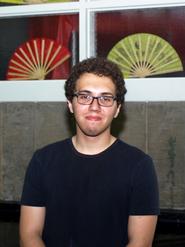
Whenever a financial institution nears bankruptcy and requests federal bailout funds, it often claims to be “too big to fail.” Unlike the Titanic’s designers who believed that she was too big to physically sink, financial executives hold no illusions about their firms’ lack of invincibility. Rather, these executives – and the politicians, analysts and voters who make bailouts possible – believe that such institutions are too big to be “allowed” to fail. While this justification has been used legitimize more than $12 trillion of government spending on bailout loans, investments and insurance, no concrete formula exists to determine when a firm becomes “too big to fail.”
To fill this void, math concentrator and prospective economics and computer science minor Julian Aronowitz ’14 has used empirical economic research, mathematical analysis tools and computer modeling to create a program to determine if and when a firm can be deemed too big to fail. His research, which is made possible by a Levitt Summer Research Fellowship, utilizes network analysis, a process whereby firms are treated as “nodes” made up of connections to other firms and institutions. These nodal relationships are then displayed on a network analysis graph to show that the termination of one node can have drastic effects on the others. He is being advised by Christian A. Johnson Excellence in Teaching Professor of Economics Elizabeth Jensen.
Aronowitz has written two programs in C++, a computer programming language, in order to analyze the interconnectivity of financial firms. The first of the programs is designed to calibrate the various properties shared by certain firms while the second program is designed to make the virtual firms interact. Once running, his program creates “banks” and other virtual institutions and moves money and investments from one virtual firm to another. Once these nodes are properly interconnected, Aronowitz can shut down one node and watch other nodes fail as a result.
Aronowitz originally intended to create a formula with a formal criterion for “too big to fail.” As the project continued, though, he began to realize there were a nearly infinite number of possible connection variables that could bring nodes together. As a result, Aronowitz modified his research goals so that he can “teach [himself] about the financial crisis while using and improving [his] math and computer science skills.” He has already gained a significant understanding of the 2008 financial crisis and the application of computer programming within the field of economics.
While Aronowitz’s program does not determine the point at which a firm is deemed too big to fail, he believes that the principle of “too big to fail” can be a relatively straightforward determination based on ratios and the connective attributes of certain nodes.
According to Aronowitz, the most rewarding aspect of his project has been the opportunity to explore economics without the constraints of a formal classroom and to “contribute mathematical perspective to economic policy decisions.” While he doesn’t plan to further his project in the form of a senior thesis, he did note that more nodes can always be added to his program to increase the complexity of the model and the level of realism.
Aronowitz is a graduate of Rockland Country Day School (N.Y.)
Posted July 11, 2012
